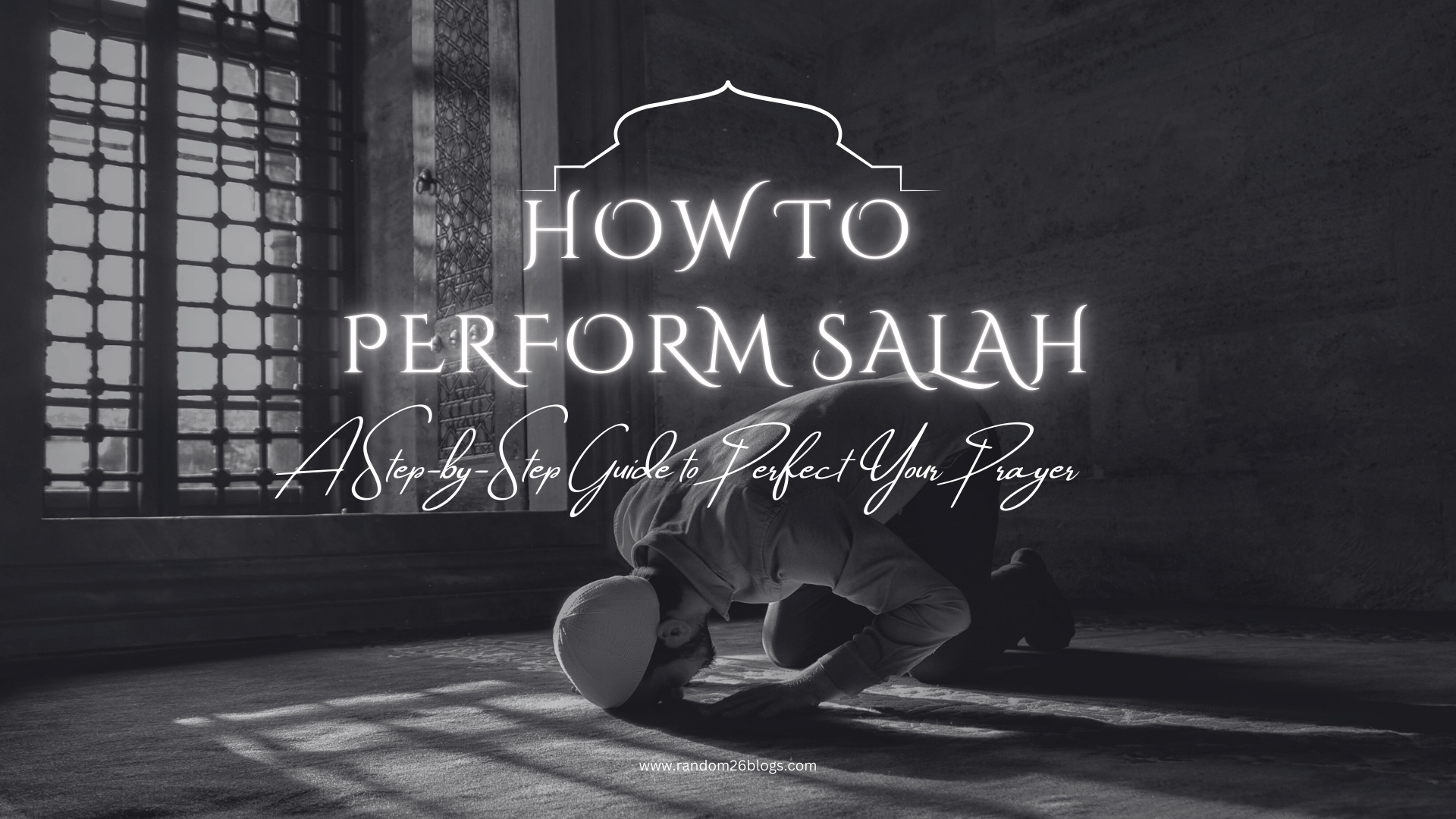
Thumbnail titled 'How to Perform Salah: A Step-by-Step Guide to Perfect Your Prayer' designed for an Islamic blog post on prayer rituals
Learn how to perform Salah (Islamic prayer) correctly with this detailed step-by-step guide. Perfect for beginners and those refining their worship.
Table of Contents
Introduction: The Importance of Salah in Islam
Salah is the second pillar of Islam and a direct connection between a believer and Allah. The Prophet Muhammad ﷺ said:
“The first matter the servant will be held accountable for on the Day of Judgment is the Salah. If it is sound, the rest of his deeds will be sound” (Sunan Ibn Majah).
Whether you’re new to Islam or seeking to refine your practice, this guide simplifies Salah into clear, actionable steps.
1. Preparing for Salah
Purification (Wudu)
- Perform Wudu (ablution) as instructed in the Quran:
“O you who believe! When you rise for prayer, wash your faces and your hands up to the elbows, wipe your heads, and wash your feet up to the ankles” (Quran 5:6).
Dress Code
- Wear clean, modest clothing covering the Awrah (body parts requiring covering).
Facing the Qiblah
- Position yourself toward the Kaaba in Makkah. Use a compass or app like “Qibla Finder.”
Deepen your spiritual routine with Benefits of Reciting the Quran Daily.
2. Step-by-Step Guide to Performing Salah
Step 1: Intention (Niyyah)
Silently intend to perform the specific prayer (e.g., Fajr, Dhuhr).
Step 2: Takbiratul Ihram
Raise your hands to your ears and say: “Allahu Akbar” (Allah is the Greatest).
Step 3: Recitation
- Surah Al-Fatihah: Recite the opening chapter of the Quran.
- Additional Surah: Recite a short Surah (e.g., Al-Ikhlas) in the first two Rak’ahs.
Step 4: Ruku (Bowing)
Bow, place hands on knees, and say: “Subhana Rabbiyal Adheem” (Glory to my Lord, the Almighty) x3.
Step 5: Sujood (Prostration)
Prostrate with forehead, nose, palms, knees, and toes touching the ground. Say: “Subhana Rabbiyal A’la” (Glory to my Lord, the Most High) x3.
Step 6: Tashahhud
Sit and recite the Tashahhud:
“At-Tahiyyatu lillahi… Ashhadu an la ilaha illallah wa ashhadu anna Muhammadan ‘abduhu wa rasuluh.”
Step 7: Salam (Ending the Prayer)
Turn your head right and left, saying: “Assalamu alaikum wa rahmatullah” (Peace and mercy of Allah be upon you).
3. Common Mistakes to Avoid
- Rushing: Salah requires mindfulness—avoid speeding through movements.
- Incorrect Posture: Ensure proper alignment in Ruku and Sujood.
- Neglecting Sunnah Acts: Include Sunnah prayers (e.g., 2 Rak’ahs before Fajr).
Strengthen your dua with Understanding the 99 Names of Allah.
4. Tips for Consistency in Salah
- Set Reminders: Use apps like “Prayer Times” for Athan alerts.
- Pray in Congregation: Join mosque prayers for community support.
- Reflect on Meanings: Study translations to deepen emotional connection.
FAQs About Salah
Q: What if I miss a prayer?
A: Make it up as soon as possible (Qada).
Q: Can I pray Salah in English?
A: Quranic recitation must be in Arabic, but personal dua can be in any language.
Q: How long does Salah take?
A: 5-10 minutes per prayer, depending on recitation length.
Embrace Salah as a Spiritual Lifeline
Salah is more than ritual—it’s a daily renewal of faith. By following this guide, you’ll build a stronger connection with Allah and experience the peace of disciplined worship.
- Enhance your prayer focus with Benefits of Reciting the Quran Daily.
- Explore Allah’s attributes in Understanding the 99 Names of Allah.
How to perform Salah, step-by-step Salah guide, Islamic prayer, learn Salah, Salah for beginners.
New Muslims, reverts, parents teaching children, and anyone refining their prayer practice.







4 thoughts on “How to Perform Salah: A Step-by-Step Guide to Perfect Your Prayer”